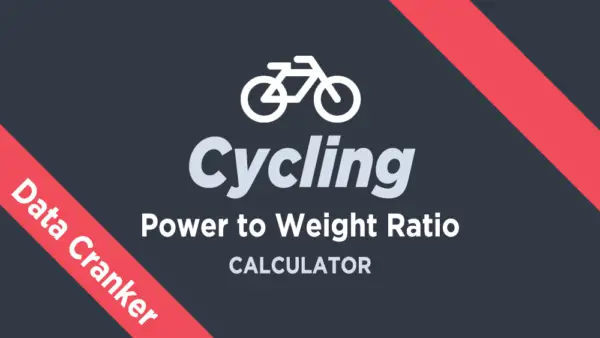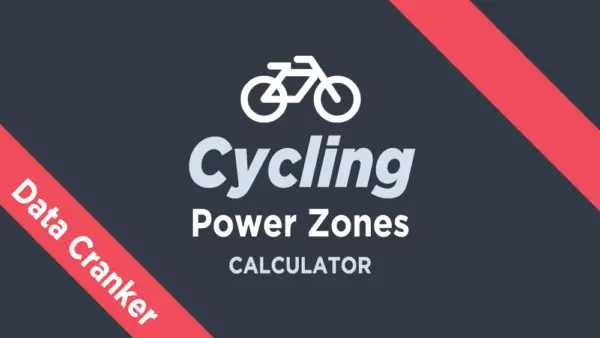By using our simple calculator, you can instantly calculate your cycling power zones!
Training with power has been proven again and again to be the most efficient way to improve your cycling performance. However, for it to be successful, you need to be aware of your various power zones and what each zone means for your training.
STEP 1 - Establish your Functional Threshold Power (FTP)
Please note that some sort of power measuring device is required for this test. The best way to calculate your FTP is to do a 30-minute all out time trial by yourself, which can be done on the road or on an indoor trainer. Your FTP is your average power for the entire 30 minutes.
STEP 2 - Determine your Lactate Threshold Heart Rate (LTHR)
The best way to calculate your LTHR is to do a 30-minute all out time trial by yourself. Use a heart rate monitor to check your average heart rate for the last 20 minutes of your time trial and that will be your LTHR Make sure you do not slouch in the first 10 minutes though, it is all out for the full 30 minutes!
STEP 3 - Input FTP
STEP 4 - Input LTHR
*Only works with numbers*
STEP 5 - View results from calculation table
| Training Zones | Excertion | Average Power | Average HR |
|---|---|---|---|
| 1 - Active Recovery | <2 | < {{pwValue * .55 | number:0}} | 0 - {{hrValue * .81 | number:0}} |
| 2 - Endurance | 2-3 | {{pwValue * .55 | number:0}} - {{pwValue * .75 | number:0}} | {{hrValue * .81 | number:0}} - {{hrValue * .89 | number:0}} |
| 3 - Tempo | 3-4 | {{pwValue * .75 | number:0}} - {{pwValue * .90 | number:0}} | {{hrValue * .90 | number:0}} - {{hrValue * .93 | number:0}} |
| 4 - Lactate Threshold | 4-5 | {{pwValue * .90 | number:0}} - {{pwValue * 1.05 | number:0}} | {{hrValue * .94 | number:0}} - {{hrValue * .99 | number:0}} |
| 5 - V02 Max | 6-7 | {{pwValue * 1.05 | number:0}} - {{pwValue * 1.2 | number:0}} | {{hrValue}} - {{hrValue * 1.02 | number:0}} |
| 6 - Anaerobic Capacity | >7 | > {{pwValue * 1.20 | number:0}} | N/A |
| 7 - Neuromuscular Power | Max | N/A | N/A |
Power Zones by Andrew Coggan, Ph.D.
RESULTS - What do I do with this data?
When using cycling training zones it is best to have an experienced coach who knows what they are doing.
You can also learn more about this subject by reading some of the recommended books below:
POWER ZONE REFERENCES
- 1 - Active Recovery
- "Easy spinning" or "light pedal pressure", i.e., very low level exercise, too low in and of itself to induce significant physiological adaptations. Minimal sensation of leg effort/fatigue. Requires no concentration to maintain pace, and continuous conversation possible. Typically used for active recovery after strenuous training days (or races), between interval efforts, or for socializing.
- 2 - Endurance
- "All day" pace, or classic long slow distance (LSD) training. Sensation of leg effort/fatigue generally low, but may rise periodically to higher levels (e.g., when climbing). Concentration generally required to maintain effort only at highest end of range and/or during longer training sessions. Breathing is more regular than at level 1, but continuous conversation still possible. Frequent (daily) training sessions of moderate duration (e.g., 2 h) at level 2 possible (provided dietary carbohydrate intake is adequate), but complete recovery from very long workouts may take more than 24 hs.
- 3 - Tempo
- Typical intensity of fartlek workout, 'spirited' group ride, or briskly moving paceline. More frequent/greater sensation of leg effort/fatigue than at level 2. Requires concentration to maintain alone, especially at upper end of range, to prevent effort from falling back to level 2. Breathing deeper and more rhythmic than level 2, such that any conversation must be somewhat halting, but not as difficult as at level 4. Recovery from level 3 training sessions more difficult than after level 2 workouts, but consecutive days of level 3 training still possible if duration is not excessive and dietary carbohydrate intake is adequate.
- 4 - Lactate Threshold
- Just below to just above TT effort, taking into account duration, current fitness, environmental conditions, etc. Essentially continuous sensation of moderate or even greater leg effort/fatigue. Continuous conversation difficult at best, due to depth/frequency of breathing. Effort sufficiently high that sustained exercise at this level is mentally very taxing - therefore typically performed in training as multiple 'repeats', 'modules', or 'blocks' of 10-30 min duration. Consecutive days of training at level 4 possible, but such workouts generally only performed when sufficiently rested/recovered from prior training so as to be able to maintain intensity.
- 5 - V02 Max
- Typical intensity of longer (3-8 min) intervals intended to increase VO2max. Strong to severe sensations of leg effort/fatigue, such that completion of more than 30-40 min total training time is difficult at best. Conversation not possible due to often 'ragged' breathing. Should generally be attempted only when adequately recovered from prior training - consecutive days of level 5 work not necessarily desirable even if possible. Note: At this level, the average heart rate may not be due to slowness of heart rate response and/or ceiling imposed by maximum heart rate)
- 6 - Anaerobic Capacity
- Short (30 s to 3 min), high intensity intervals designed to increase anaerobic capacity. Heart rate generally not useful as guide to intensity due to non-steady-state nature of effort. Severe sensation of leg effort/fatigue, and conversation impossible. Consecutive days of extended level 6 training usually not attempted.
- 7 - Neuromuscular Power
- Very short, very high intensity efforts (e.g., jumps, standing starts, short sprints) that generally place greater stress on musculoskeletal rather than metabolic systems. Power useful as guide, but only in reference to prior similar efforts, not TT pace.
- Perceived Excertion
- 0 - nothing, 3 - moderate, 7 - very strong, 10 - extremely strong
Power Zones by Andrew Coggan, Ph.D.
References & Recommended Readings
For more information about cycling training with power, I recommend reading the following books.
Training and Racing with a Power Meter
The Cyclist's Training Bible
Recommended Power Meters
Are you looking for a new power meter to help you train with power? I personally use the Favero Assioma power pedals (see price on Amazon).
I went with a pedal based power meter because I wanted to be able to use it on different bikes, and they are super easy to work with. Not to mention these are quite affordable compared to other power meters out there.




